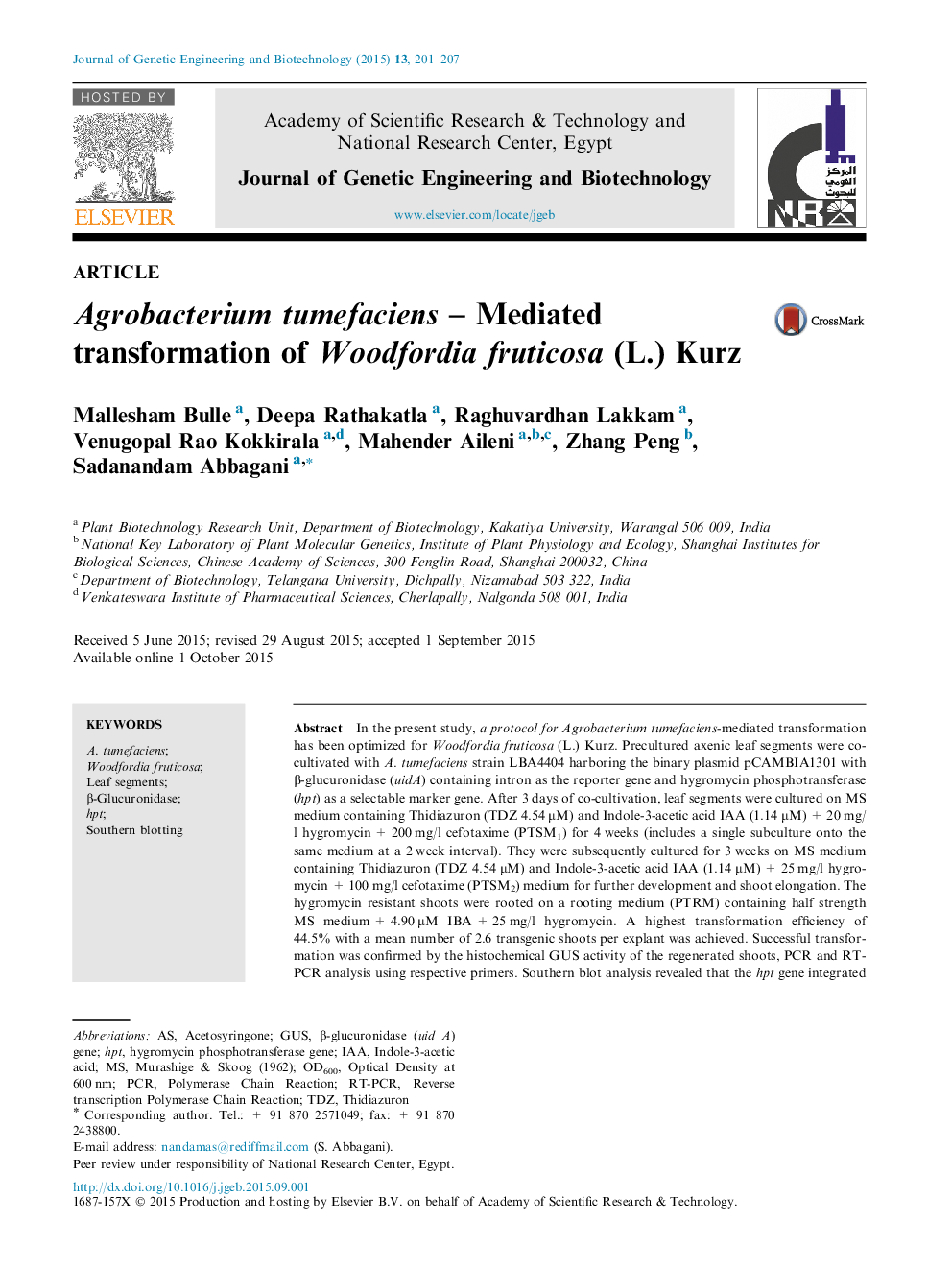| Article ID | Journal | Published Year | Pages | File Type |
|---|---|---|---|---|
| 2087869 | Journal of Genetic Engineering and Biotechnology | 2015 | 7 Pages |
In the present study, a protocol for Agrobacterium tumefaciens-mediated transformation has been optimized for Woodfordia fruticosa (L.) Kurz. Precultured axenic leaf segments were co-cultivated with A. tumefaciens strain LBA4404 harboring the binary plasmid pCAMBIA1301 with β-glucuronidase (uidA) containing intron as the reporter gene and hygromycin phosphotransferase (hpt) as a selectable marker gene. After 3 days of co-cultivation, leaf segments were cultured on MS medium containing Thidiazuron (TDZ 4.54 μM) and Indole-3-acetic acid IAA (1.14 μM) + 20 mg/l hygromycin + 200 mg/l cefotaxime (PTSM1) for 4 weeks (includes a single subculture onto the same medium at a 2 week interval). They were subsequently cultured for 3 weeks on MS medium containing Thidiazuron (TDZ 4.54 μM) and Indole-3-acetic acid IAA (1.14 μM) + 25 mg/l hygromycin + 100 mg/l cefotaxime (PTSM2) medium for further development and shoot elongation. The hygromycin resistant shoots were rooted on a rooting medium (PTRM) containing half strength MS medium + 4.90 μM IBA + 25 mg/l hygromycin. A highest transformation efficiency of 44.5% with a mean number of 2.6 transgenic shoots per explant was achieved. Successful transformation was confirmed by the histochemical GUS activity of the regenerated shoots, PCR and RT-PCR analysis using respective primers. Southern blot analysis revealed that the hpt gene integrated into the genome of transgenic W. fruticosa. Establishment of genetic transformation protocol may facilitate the improvement of this medicinal plant in terms of enhancement of secondary metabolites.
